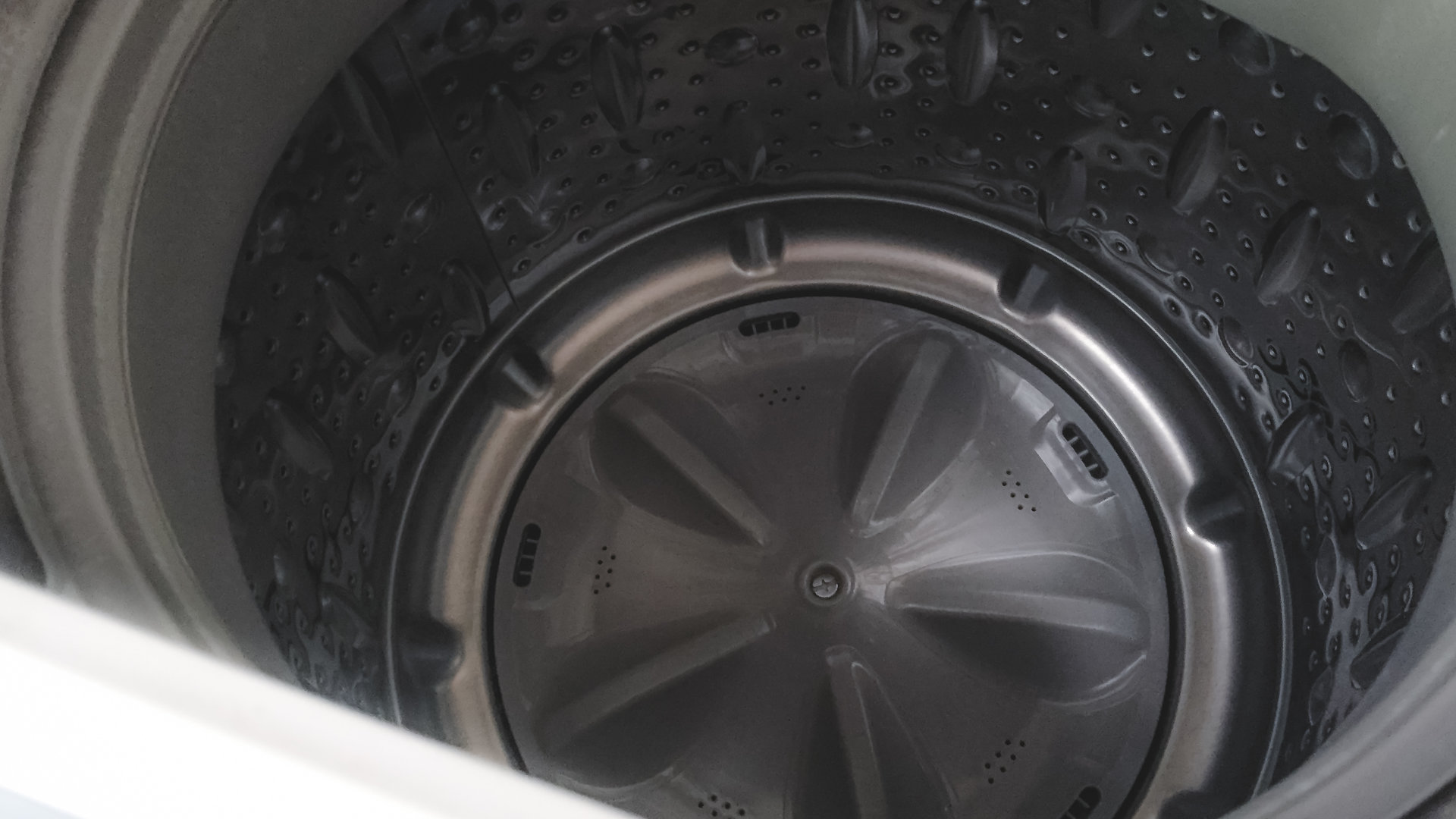
It’s a proud moment when you fix something at home instead of calling a repair technician. Whether you’ve just snaked the sink or revived the toaster, anyone would feel that warm rewarding sensation of a job well done. One of the things about DIY home repairs is that it’s hard to stop once you’ve started. You can keep building your appliance repair skills and confidence with each fix you take care of yourself.
So when your washing machine starts to act up, it’s important to know what you can easily tackle, and when it might be time to call a professional. Washing machines are large, complex, and water-filled appliances that must be handled with care. But there are a few easy repairs you can make that can save you a repair call and improve your personal DIY repair skills. Let’s take a look at the top seven washing machine repairs you can do easily at home.
1. Level the Washer
The single easiest washer repair is one that very few people know about: setting the appliance level on the floor. If the floor or washer feet are uneven, then the washer will lean to one side. This can cause an imbalance in the drum along with wobbling and scraping. Many noise and performance problems with your washer can be attributed to uneven legs.
Fortunately, this fix is simple. All you need is a bubble level and a wrench. Use the bubble level to identify when the washer is level and which way it’s leaning. Then twist the feet to retract or extend them until the washer is level on top.
2. Clear the Hoses
Next, consider the hoses. There are many things that can go wrong with washer hoses both inside and outisde the cabinet. Confidence in working with plumbing and hoses can really help you out here.
Make sure that the valves are on and open if your washer hasn’t been running correctly. Or turn off the valves to remove and clean the hoses that supply your washer. Cleaning the hoses of water mineral buildup can reduce clogs and improve washer performance. You can also remove the back panel of your washer to access the additional water lines inside the washer that lead to and from the pump and the drain.
The best way to clear clogged or dirty hoses is with vinegar and hot water. Any clogs you run into along the way, apply vinegar and hot water and watch the buildup melt away. Don’t forget to switch the water back on when you’re done with the hoses.
3. Replace a Control Switch
Once it starts getting into screwdrivers and wires, many people get nervous about DIY repairs. But some are much easier than others. If’ you’re confident enough to install a set of speakers, then you have the skills to replace one of the control switches inside the top console of a top-load washer.
The control switches are individual components. Once accessed from the back, you can remove the knob, replace the switch, and put the knob back on. The hardest part is transferring a small wire clip from the old switch to the new switch. So if your washer controls or start button stop working, all you need is a screwdriver and a replacement part to get your washer running in good working order again.
Just remember to turn off the power when you do any kind of electrical repair. This ensures that there’s no current running through the wires you will be handling, and therefore no risk of electric shock.
4. Check the Plug and Breaker
If your washer has just stopped working, check the power sources. This sounds like a redundant piece of advice but you might be surprised how many washing machine malfunctions occur just because the power was cut, not because there’s anything wrong with the washer. A washing machine that shakes can even unplug itself. It does this by “walking”, which is when the washer moves over the floor as it shakes. If the washer walks far enough while wiggling the cord, the cord can fall out of the wall.
If your washer shares a circuit with any other appliance, there’s also a chance that the breaker will blow and/or flip. So check out your breaker box if the washer is not working and the plug is securely in the wall.
5. Run Empty with Hot Water and Vinegar
If your clothes are coming out stiff, musty, or there’s an excess of white chalky buildup inside the washer, your problem is likely a combination of mildew and hard water. Hard water contains chalky minerals like calcium and magnesium that leave that white residue. The white residue builds up. It can not only block pipes and hoses, but it can also make skin, hair, and clothes washed in hard water feel chalky and stiff. Clothes that are washed in hard water may not get clean (soap doesn’t suds as well in hard water) and is more likely to mildew in the wash.
Fortunately, the solution is the same for both problems: Vinegar and hot water. Remember this remedy? This time, pour one to two cups of white vinegar into your soap dispenser. Then run the washer empty with hot water to clear out any remaining hard water buildup.
If you have very hard water in your home, add a splash of vinegar to every washer load. This trick also works in the dishwasher.
6. Break Up a Drain Clog
Sometimes, what’s wrong with your washer isn’t the washer at all. It might be the drain underneath or behind your washer instead. If the drain clogs from lint, hair, chalky buildup, or other drain problems with the house, then your washer will back up and leak on the floor. You can clear your washer’s drain in the same ways that you clear your sink drain. Use chemical cleaner, hot water, vinegar, and a drain snake that can easily be purchased online or in a local hardware store. If you have ongoing drain problems in the house, try clearing multiple drains at once to stop your washer from leaking when it drains.
—If you love to fix things DIY, then appliance repair is an interesting and rewarding skill to learn. These six repairs are easy and can be safe to do at home if you take the right precautions. For more great appliance repair guides or to talk to a repair technician about your washing machine concerns, contact us today!

Your Guide to Whirlpool Microwave Replacement Parts

What to Do When Your Kenmore Dryer Won’t Start

How to Resolve the LG Washer LE Error Code

Why Does My Oven Smell Like Gas? Causes and What to Do

Maytag Dryer Not Heating? Here’s How to Fix It

6 Common Reasons Your Speed Queen Dryer Isn’t Heating

8 Reasons Your Samsung Refrigerator Is Not Cooling

9 Most Reliable Washer and Dryer Brands

How to Get Ink out of Your Dryer the Easy Way

Why Is My Fridge Making Noise That Stops When the Door Is Open?

Frigidaire Refrigerator Error Code H1: Causes & Solutions

How to Clean a Dryer Vent Without Moving the Dryer

9 Reasons Your LG Refrigerator Isn’t Cooling

LG Refrigerator Not Making Ice? Here’s What To Do!


